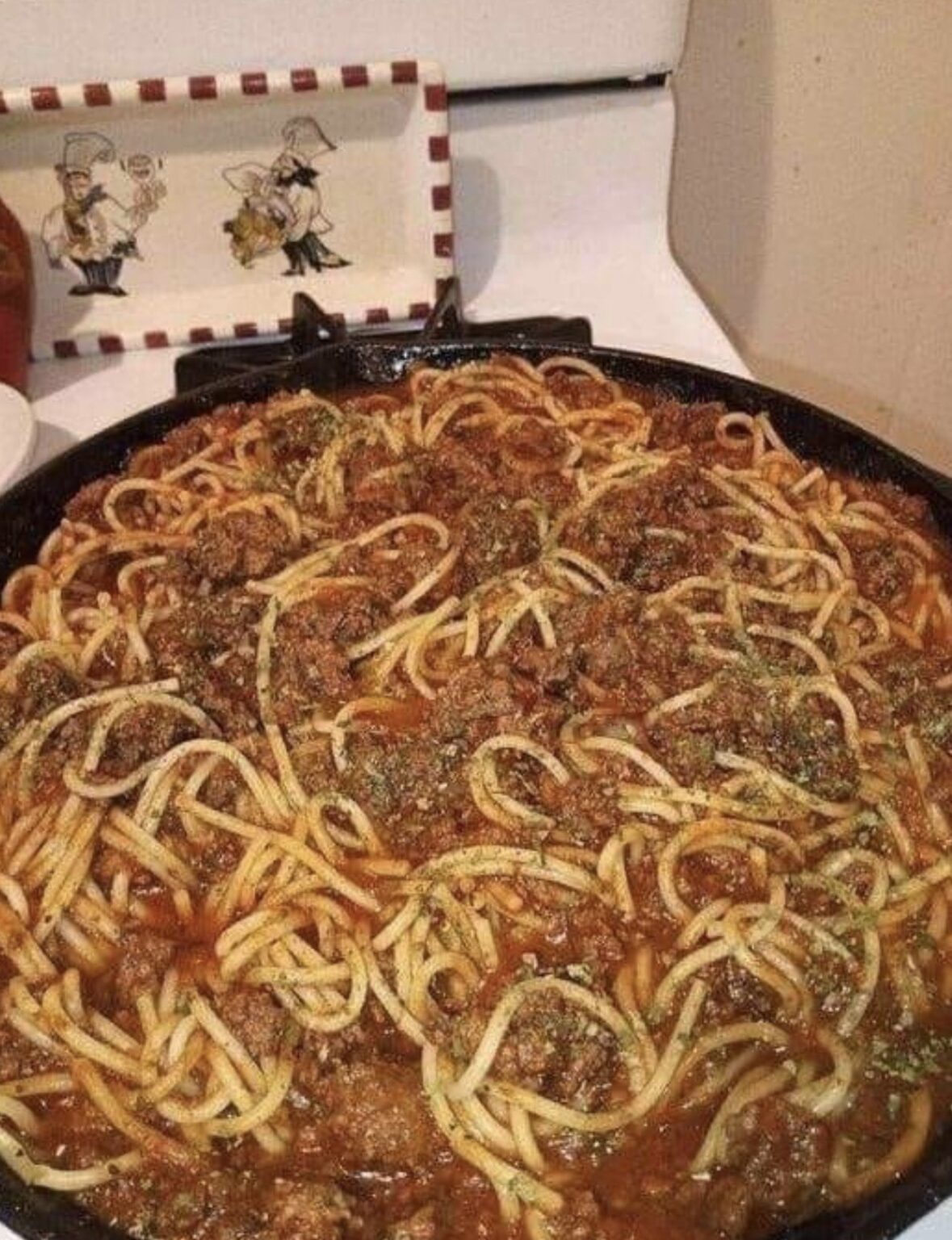ADVERTISEMENT
Step-by-Step Recipe Instructions
Step 1: Prepare the Pasta Dough
- Create a Flour Well: On a clean countertop or in a large mixing bowl, mound 2 cups of all-purpose flour and make a well in the center.
- Add Ingredients: Crack 3 large eggs into the well, add 1/2 teaspoon of salt, and drizzle 1 tablespoon of olive oil over the eggs.
- Mix and Knead: Using a fork, gradually mix the flour into the eggs until a sticky dough forms. Knead the dough with your hands for about 8-10 minutes until it becomes smooth and elastic. If the dough is too sticky, add a bit more flour; if it’s too dry, add a splash of water.
- Rest the Dough: Wrap the dough in plastic wrap or cover it with a clean kitchen towel and let it rest at room temperature for at least 30 minutes.
Step 2: Prepare the Tomato Sauce
- Sauté Aromatics: Heat 2 tablespoons of olive oil in a skillet or saucepan over medium heat. Add 1 finely chopped onion and sauté until it’s translucent, about 5 minutes. Add 3 minced garlic cloves and cook for another minute.
- Add Tomatoes: Stir in 1 can of crushed tomatoes and 2 tablespoons of tomato paste. Mix well.
- Season: Add 1 teaspoon of sugar (if using), 1 teaspoon of dried oregano, 1 teaspoon of dried basil, and 1/2 teaspoon of red pepper flakes (if using). Season with salt and pepper to taste.
- Simmer: Reduce the heat to low and let the sauce simmer for 20-30 minutes, stirring occasionally. If adding ground beef or Italian sausage, cook them separately and add to the sauce.
Step 3: Roll and Cut the Pasta
- Divide the Dough: Once rested, divide the dough into 4 equal pieces. Keep the pieces you’re not working with covered to prevent drying out.
- Roll Out the Dough: Use a rolling pin or pasta machine to roll out one piece of dough to about 1/16 inch thick. Dust with semolina flour to prevent sticking.
- Cut the Pasta: Cut the rolled dough into spaghetti-sized strands using a knife or pasta cutter. Repeat with the remaining dough.
Step 4: Cook the Pasta
- Boil Water: Bring a large pot of salted water to a rolling boil.
- Cook Pasta: Add the fresh pasta to the boiling water and cook for 2-3 minutes, or until al dente. Fresh pasta cooks quickly, so keep an eye on it.
- Drain: Once cooked, drain the pasta in a colander and reserve a cup of pasta water.
Step 5: Combine and Serve
- Mix Pasta and Sauce: Add the drained pasta to the simmering sauce and toss to coat evenly. If needed, add a splash of reserved pasta water to help the sauce adhere.
- Garnish and Serve: Serve the spaghetti hot, garnished with fresh basil leaves and grated Parmesan cheese if desired.
Tips for Perfect Homemade Spaghetti
- Use Fresh Ingredients: For the best flavor, use fresh tomatoes, herbs, and high-quality pasta.
- Don’t Overknead: Knead the dough just enough to make it smooth and elastic. Overkneading can make the pasta tough.
- Dust with Flour: Dust the dough and work surface with semolina flour to prevent sticking.
- Taste as You Go: Adjust the seasoning in the sauce to suit your preferences.
Variations and Serving Suggestions
Meat Sauce Spaghetti
- Add Meat: Incorporate cooked ground beef, Italian sausage, or a combination into the tomato sauce for a hearty meat sauce.
Spaghetti Aglio e Olio
- Simple and Flavorful: Skip the tomato sauce and toss the spaghetti with sautéed garlic, olive oil, red pepper flakes, and parsley for a classic Italian dish.
Spaghetti with Pesto
- Fresh and Herby: Replace the tomato sauce with basil pesto for a fresh and aromatic twist.
Vegetarian Spaghetti
- Vegetable Sauce: Add sautéed vegetables like bell peppers, zucchini, and mushrooms to the tomato sauce for a nutritious and filling option.
How to Store Homemade Spaghetti
Refrigeration: Store leftover spaghetti in an airtight container in the refrigerator for up to 3 days. Reheat gently on the stovetop or in the microwave, adding a splash of water or sauce to prevent drying.
Freezing: Freeze uncooked pasta by laying it flat on a baking sheet and transferring it to a freezer-safe container once frozen. Cook from frozen, adding extra time to the boiling process. Tomato sauce can also be frozen for up to 3 months.
ADVERTISEMENT
